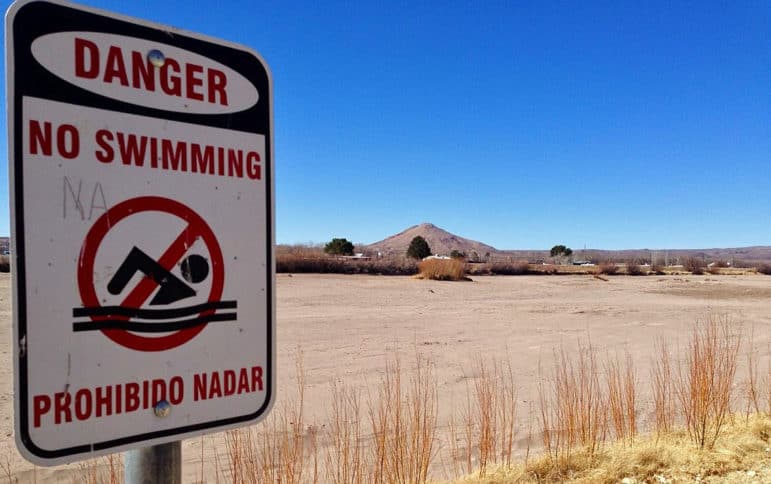
Heath Haussamen / NMPolitics.net
The Rio Grande, shown in north Las Cruces in the fall of 2014, after the water had dried up for the year.
The Rio Grande remains mired in crisis. During a time when the big squeeze is on from climate change, long-term drought conditions and increasing competition over the Rio Grande’s scarce resource, a timely new report makes recommendations on improving the management of a binational river.
Authored by Dr. Luzma Fabiola Nava, postdoctoral fellow in the water program of the Vienna-based International Institute for Applied Systems Analysis (IIASA), the study builds on Nava’s years of researching and probing the often-thorny management of the Rio Grande, or the Rio Bravo as it is called in Mexico.
In her investigation, which is published in the journal Water, Nava conducted 77 interviews with people up and down the Rio Grande, including farmers, water engineers and managers, government officials, academics, and environmentalists.
The interviewees included people from both Mexico and the United States.
“We wanted to cast as wide a net as possible because these are the people who know the river. Who better than them to talk about the existing problems and the potential solutions,” Nava said in a press release from the IIASA.
A native of Mexico who has completed academic work in the United States and Canada, Nava was a visiting fellow at New Mexico State University’s Department of Geography from 2010 to 2012. Based on her study, Nava recommends exploring mechanisms she defines as “temporary-reciprocity” so Rio Grande water traditionally applied to one use could be temporarily diverted to another, such as allowing farmers to transfer their water rights to municipal use during a drought with the proviso that the water could be returned in wetter times.
Nava also urges increased communication among the plethora of people and agencies with responsibility over the river’s management; the formation of the Rio Grande Basin Advisory Task Force as a group made up of stakeholders who will advise policy-makers; employing creative use of the minute process, or amending agreements, which have been applied within the framework 1944 Rio Grande treaty between the U.S. and Mexico; and carrying out ecological restoration projects.
Nava’s study includes discussion of the Rio Grande as a system of micro-environments carved into the broader basin.
“Development of water infrastructures and management of water resources have completely changed the hydrological dynamics,” Nava writes. “Clear examples are the very different rivers above and below (Elephant Butte) dam; above the dam; the Middle Rio Grande is still gorgeous, while downstream from (Elephant Butte Irrigation District), the river is nothing but a modified channel…”
Recently, this writer had occasion to witness the river’s stark contrasts as noted by Nava, viewing a Rio Grande drooping with cottonwoods and a decent flow of water in Albuquerque, while a concrete-embanked Rio Grande with a lonely puddle resembled more a dusty moat than a river farther south between El Paso and Ciudad Juárez.
Contributors to Nava’s study included Christopher Brown, Katalin Demeter, Frederic Lassere, Maria Milanes-Murcia, Stephen Mumme, and Samuel Sandoval-Solis. IIASA Water Program Director Simon Langan framed Nava’s work within an international and regional context that is shaped by climate change, population growth, and ecosystem health.
“This study adds to and complements the growing global recognition of the importance of water and the potential for increasing conflict where increasing demand for water exceeds supply,” Langan said.
“Nowhere is this more important in significant transboundary river basins where there is an urgent need to recognize and develop wider participation aimed at building consensus on solutions for future water management.”